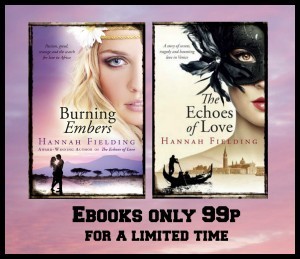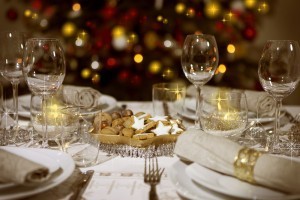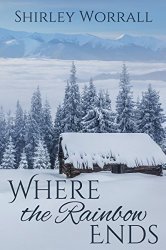Hannah Fielding's Blog, page 91
January 9, 2015
A new cover for Burning Embers
Have you noticed that my debut novel, Burning Embers, has a new cover? The design is to match The Echoes of Love, and I’m delighted with it because it pulls together so many elements of the book.
First, the model. She’s just as I picture Coral, the heroine of the book. Young. Beautiful. Blonde-haired and blue-eyed. An edge of vulnerability and nativity and yet a look in her eyes that says, ‘I can hold my own.’ I especially like the hairband she wears, because it encapsulates the time in which the book is set, 1970, and the flower pulls in her love of nature.
The silhouette of the couple pays homage to the original cover, and I love the romance of it. Burning Embers is such a passionate book, and Rafe and Coral are so entwined: the models’ stance really conveys their need to be close and all the emotion between them.
I love the signature colour, that vivid purple. So many colours are vivid in Africa, but that one has always stood out to me. Sure enough, when I read back through the book I found the shade in myriad descriptions. Of flora and fauna, like a dramatic alley of jacarandas, and wisteria, and the morning, afternoon and evening tree. Of the sky at sunset. Of shadows. But also of the fire that inspired the title, Burning Embers:‘Rekindled, the fire leapt up with purple fervor.’
Finally, the backdrop: entirely true to the setting for the book, wild Africa. The mountains have such a dramatic presence, calling to mind, for me, the scene in which Coral and Rafe take a hot-air balloon ride and see ‘the spectacular panorama of plains, snow-capped mountains, escarpment, lakes, and ridges that went on for miles, all thousands of feet below’. And I love the acacia trees, which are embedded in my memory from my visits to Kenya. They stand as sentries, timeless and calm, like old friends, and whenever I see one I call to mind this century-old poem by HayyimNahmanBialik in which the tree is a girl’s confidante:
The Old Acacia Tree
Neither daylight nor the darkness
See how silently I wander.
Not on mountain, nor in valley,
Does an old acacia ponder.
The acacia solves all mysteries,
Tells my fortune while I tarry.
I shall ask the tree to tell me
Whom O whom, am I to marry?
Where will he be from, O Acacia,
Is it Poland, Lithuania?
Will he come with a horse and a carriage
Or with staff and sack will he appear?
And what presents will be bring me -
Necklace of pearls and coral flower?
Tell me, will he be fair or dark-haired?
Still unmarried or a widower?
If he’s old, my dear Acacia,
I won’t have him, please don’t try me.
I’ll tell my father; you may slay me,
But to an old man do not tie me!
At his feet I’ll fall and with tears I’ll cry;
To an old man do not tie me.
What do you think of the new cover? I would love to hear your thoughts.
January 7, 2015
A sweet taste: The official partner of romance
 You curl up with a good book, and sip a steaming mochaccino.
You curl up with a good book, and sip a steaming mochaccino.
You watch a romance movie with a friend, and share a bowl of popcorn.
You have a romantic meal with a lover, and end with a melt-in-the-middle chocolate pudding.
You unwrap your partner’s gifts from under the tree, and find sweet nothings on a gift tagand beneath the wrappings sweet somethings.
Much has been written on the feel-good factor of chocolate: the chemistry behind our love for it, and the reasons why women, in particular, often love it (hormones!). But a recent academic study published in the Journal of Social and Personal Relationships has found that eating anything sweet can heighten feelings of romance.
The paper, entitled ‘Sweet Love: The Effects of Sweet Taste Experience on Romantic Perceptions’, explains how ‘a relatively subtlemanipulation, namely taste sensations, might influence romantic perceptions’.
The researchers tested participants’ responses in various ways. They gave some participants Oreo cookies, and others (the control group), salt and vinegar. Then the participants answered survey questions, based on the Perceived Relationship Quality Components (PRQC), about their existing relationship or, if single, a hypothetical one. The process was then repeated, using a fizzy orange drink and water, and the respondents had to indicate romantic interest based on dating profiles.
The researchers found that participants in the study evaluated a hypothetical relationshipmore favourably and were more interested in initiating a relationship with a potential partner when exposed to a sweet taste. But for those already in a relationship, there was no discernible effect. So by that logic, if you want to ‘woo’ a partner, feed him or her something sweet. And if you’re already in a relationship – well, the study did not suggest a box of chocolates would hurt in any way!
What I find most fascinating about this study is its exploration of metaphors. From the paper:
Terms of endearment such as ‘sweetie,’ ‘honey,’ and ‘sugar’ are commonly used in the context of describing romantic partners […] It has been suggested that metaphorical thinking is one fundamental way of perceiving the world; metaphors facilitate social cognition by applying concrete concepts (e.g., sweet taste) to understand abstract concepts (e.g., love; Landau et al., 2010). The current findings support this notion by demonstrating that changes in bodily experiences result in relationship perceptions that are congruent with the love as sweet metaphor.
The many ways we assign ‘sweet’ language to love actually have a logical foundation.
So a sweet taste can heighten romance. Does it work the other way as well? Can romance make a taste sweeter? According to the2013 study‘What do love and jealousy taste like?’, the answer is yes. From the paper’s abstract:
Metaphorical expressions linking love and jealousy to sweet, sour, and bitter tastes are common in normal language use and suggest that these emotions may influence perceptual taste judgments. Hence, we investigated whether the phenomenological experiences of love and jealousy are embodied in the taste sensations of sweetness, sourness, and bitterness. Studies 1A and 1B validated that these metaphors are widely endorsed.
The researchers found that participants‘induced to feel’ love rated sweets, chocolates and distilled water as tasting sweeter than those who were ‘induced to feel’ jealous, neutral or happy.
So eating something sweet can make you feel more romantic, and feeling more romantic can make the something sweet taste sweeter. Now there’s a pleasurable cycle!
January 6, 2015
Escape to Venice and Kenya this January
Are you feeling the January blues? Is winter chilling you? Well, for less than the price of a coffee you can escape to both Venice and Kenya this month with my novels The Echoes of Love and Burning Embers! The ebooks are available now on Amazon.
January 5, 2015
Stepping into a story world
 Did you see the recent news story about a real-life Hogwarts, the school at which the Harry Potter series is set? Czocha Castle in Poland was transformed into a ‘College of Wizardy’ modelled on the school in JK Rowling’s books. One hundred and ninety fans from around the world came together to stay at the castle and study such imaginative subjects as fighting the dark arts, healing working with magical animals and studying the unspeakables. The event was so popular that it sold out quickly and the organisers have arranged further dates. (For a peek at the castle, see http://www.telegraph.co.uk/culture/harry-potter/11283210/harry-potter-real-hogwarts.html.)
Did you see the recent news story about a real-life Hogwarts, the school at which the Harry Potter series is set? Czocha Castle in Poland was transformed into a ‘College of Wizardy’ modelled on the school in JK Rowling’s books. One hundred and ninety fans from around the world came together to stay at the castle and study such imaginative subjects as fighting the dark arts, healing working with magical animals and studying the unspeakables. The event was so popular that it sold out quickly and the organisers have arranged further dates. (For a peek at the castle, see http://www.telegraph.co.uk/culture/harry-potter/11283210/harry-potter-real-hogwarts.html.)
The participants were engaged in what is called live-action role play, an activity that is popular with ‘hardcore’ fantasy readers. Not everyone wants to go quite so far as wearing robes and waving wands, but many people still enjoy engaging in a fantasy world. Remaining with the Harry Potter world for a moment, a hotel in London recently created ‘Wizard Chamber’ bedrooms for guests looking to get a feel of Hogwarts (presumably, one doesn’t need to wear a pointy hat in order to stay).
Beyond the fantasy genre into romance, readers still want to engage with the story world. But what’s great about the romance genre is that in order to be part of the fantasy there is no need to go anywhere or do anything but read.
Reviewers of my books often comment on the sense of place that I create. For example, reviewers of The Echoes of Love have said:
Bringing Venice to life like never before… – TNT magazine
Hannah Fielding … manages to convey a perfect sense of time and place. – Jaffa Reads Too
While reading you feel like you are floating down the canals in Venice on a gondola… – Book loving Hippo
I still have that feeling that I was there, but I’ve never been in Venice or in Italy. – Books Are My Life
When I need a really good romantic story and need to travel I just have to go to Hannah Fielding’s books and BAM! – Miss Read-a-Lot
I truly felt immersed in Italy, the food, the scenery, and the architecture. Pure bliss…. – Carol Oates, author
Throughout the novel it is the mesmerizing background of Venice that took my breath away… The charm, the history, the Carnival season, and all that water, make this city one of the destinations I desire to visit one day, and through her wonderful storytelling skills, Fielding takes her readers there through her words. – Sharon’s Garden of Books
The book makes the reader want to visit Italy… The descriptions of the sights and sounds evoked such beautiful images. – Associated British Press
I am always delighted when a reader talks of being transported to the setting through my writing. For me, the setting is integral to the romantic atmosphere, so the more the reader identifies with it, the more romantic the reading experience. I write about beautiful, inspirational places to which I have travelled. Visiting Kenya or Italy is wonderful, but few people have the time or means to do so. I endeavour therefore in my writing to transport the reader in his or her imagination.
In fact, while the settings themselves are important to the stories, it is the sense of them that matters most. Which means that to enter the Hannah Fielding story world, all you need to do is find a place, any place, that you find beautiful and inspirational.
I suppose that is why I write true-to-life romance rather than fantasy. Schools of witchcraft and wizardry are the stuff of fairy tales – but love: it is magical, but real. And so it is that my story world is real, and accessible to each and every reader.
January 3, 2015
Where the Rainbow Ends by Shirley Worrall
From the blurb:
In 1873, Amelia Penrose and her twin brother James are abandoned as babies in a trunk outside a Liverpool orphanage.
Amelia grows up longing for security and, at eighteen years of ages, she marries American sailor, Miles Carter. They exchange England for Seattle, and are soon making the treacherous journey north to the Klondike where they hope to make their fortune.
While searching for gold, Amelia experiences love and loss, and comes to find the true meaning of security…
If you’re looking to start the New Year in good cheer and keeping in mind what matters most in life then this is a good book to start with.
I would class this as a plot-driven book: there is plenty of story here, spanning quite some years, with lots of twists and turns and action to make you want to keep turning the pages. There’s darkness and light, and some laughter too, but foremost in the novel are two themes:
The quest to make something of oneself: There are plenty of characters to admire in the book for their grit and deamination to find security and to build a prosperous life. The author also shows the other side to that quest, through those characters who are foolish or ruthless and will trample on others in the search for a fortune.
The search for real and lasting love: This is classed as a romance novel, but it’s not purely – the romance isn’t at the heart of the book, I don’t think. That said, it’s important. Amelia has her share of sorrows in love, and learns much about herself along the way, and I really liked the realism of her relationships – she and her partners felt vivid to me in how they interacted with each other and chased their own dreams. Across the sea in England, I enjoyed the story of Amelia’s brother James and his family; the dual perspective makes for interesting reading. And it is the family love that shines through the most, I think – the love between those who became a family when they were abandoned, the matron who became their mother figure and the next generation that is born to happier circumstances.
I liked the setting for the book. The era comes through clearly; I had a good sense of James and his wife in Liverpool, and of Amelia in the Klondike. I think Amelia encapsulates well the spirit of the times, and she’s a character you can’t help but admire for her work ethic and determination to succeed.
Ultimately, it is the symbolism of the rainbow that draws the threads of the book together, and I found that to be quite beautiful. Does Amelia find a pot of gold at the end of her rainbow? I will let you read for yourself to find out – but I’ll say this: she finds a whole lot more besides the security money can buy.
Where the Rainbow Ends is available now from Amazon; click on the book cover below to visit the store.
December 31, 2014
New Year’s Eve traditions around the world
 New Year’s Eve is a cause for celebration in many cultures: the end of the old and the start of the new; a clean slate; a time of hope. If you could zoom out and view the world from afar, over the course of the night you’d see explosions of colour spreading across, from Kiribati and Samoa, the first nations to welcome the New Year, to Hawaii, the last. Spectacular fireworks, such as those enchanting the characters at the start of my novel The Echoes of Love:
New Year’s Eve is a cause for celebration in many cultures: the end of the old and the start of the new; a clean slate; a time of hope. If you could zoom out and view the world from afar, over the course of the night you’d see explosions of colour spreading across, from Kiribati and Samoa, the first nations to welcome the New Year, to Hawaii, the last. Spectacular fireworks, such as those enchanting the characters at the start of my novel The Echoes of Love:
Soft stars of colour shot up, soaring into the night. One after another, bouquets of primrose, coral and lilac rose slowly into the sky, blossomed exotically there, flamed, floated, and then vaguely fell, as if faint with an excess of beauty, into the inky water below, which received them and folded them to itself with a kiss.
Wherever you are in the world, there are bound to be festivities to enjoy. But what of the traditions of this time of year? Other than counting down the end of the old year and toasting the start of the new one, what symbolism can you employ at this time of year? Here are some ideas inspired by customs around the world:
Brazil: Wear white to signify peace in the New Year (never black, which means the year is doomed).
Denmark: Jump off your chair at midnight.
Ecuador: Men, dress as the widow of the year nearly gone (yes, that means drag) and take to the streets. Stop cars, and the drivers must pay you, the widow, coins in order to pass.
Estonia: Eat seven, nine, or twelve times over the course of New Year’s Eve: for each meal you eat, you take on the strength of that many men for the following year. But don’t finish the meal; leave some for the spirits.
Finland: Dabble in molybdomancy: tell the fortunes for the coming year by melting lead in a pan and then pouring it into a bucket of cold water. You end up with a mass of metal, which you then analyse much as one looks for meaning in a crystal ball. A bit of fun!
Germany: Rub some ash on your forehead. That brings good luck and health for the year to come.
Greece: Cook a Vassilopitacake (King’s Pie), and include inside it a coin. After midnight, serve the cake. The person whose slice contains the coin will have good fortune.
Italy: Wear red underwear to bring luck!
North and South Korea: Eat Tteok-Guk soup to bring luck and a long life.
Philippines: At midnight, throw money to invite wealth for the New Year, and make a din with voices and instruments to scare off bad luck and evil spirits. (Apparently, jumping up and down during the chimes makes you grow taller as well…)
Russia: Ensure that your first visitor of the New Year will be male. Apparently, that means it will be a good year.
Scotland: Take on the spirit of Hogmanay and go ‘first footing’ – visiting friends and family with gifts through the night. Whisky is especially welcomed.
Serbia: The New Year as the new Christmas! Decorate a tree and receive presents from Santa.
Spain: Eat a grape at each chime of the bells atmidnight, and make a wish for each grape.
Then, of course, comes New Year’s Day, and another host of traditions. But the most prevailing across cultures is the self-improvement resolution, which dates back as far as the Babylonians and the Romans, and was popular in the medieval period. A 2007 academic study suggested that the success rate for resolutions is low, at just 12%, but no matter: what’s important is the hope that buoys us through the last days of winter.
December 28, 2014
Losing your first draft: Catastrophe or blessing?
Every writer, surely, has some experience of losing a price of writing. The computer crashes or the coffee spills on the notebook, and the words are gone for ever. It’s utterly devastating, because those lost words were so precious and loved (even if you intended to rewrite them), and because you know that no matter how hard you try, you’ll never entirely rediscover the writing. A kind of magic happens when you write in earnest – the muse visits. That magic is captured in the moment only; it cannot be recreated any more than you can go back in time and read the words once more as you wrote them.
But if Hemingway was right, and the first draft of anything is rubbish (he used a more colourful term, of course!), then losing it shouldn’t matter. And yet Hemingway himself did not cope well with losing his work.
Gare de Lyon, December 1922. Hemingway’s first wife, Hadley, was preparing to board a train to Switzerland, where Hemingway was waiting for her, and a suitcase full of his manuscripts. Hadley took her eye off the suitcase for a few minutes, and it was gone. Almost everything the as-yet unpublished writer Hemingway had written, gone. In a letter to his fellow writer Ezra Pound, Hemingway said:
I suppose you heard about the loss of my Juvenalia? … You, naturally, would say, ‘Good’ etc. But don’t say it to me. I ain’t yet reached that mood.
Hemingway continued to write, of course, and achieved great success for his writing. I wonder how much he continued to miss those early works. I wonder whether Ezra would have been right to say ‘Good’ – did he write better the second time around?
Author Robert Louis Stevenson did, if we are to believe his wife. After he wrote the first draft of Dr Jekyll and Mr Hyde, he showed it to his wife, Fanny, and told her he thought it was his greatest work. Her reaction? She threw the manuscript on the fire.
Her motives are not entirely clear. Some say Fanny was of the opinion thatDr Jekyll and his duality were distasteful, and that Stevenson had cheapened himself by writing a shilling shocker. Others believe her act was driven by literary criticism, albeit taken to the extreme.
For the next three days Robert Louis Stevenson wrote tirelessly, penning 10,000 words each day, until a manuscript for Dr Jekyll and Mr Hyde was once more in existence. Weeks later, the novel was in print, and from there it became hugely popular worldwide and brought in a solid income that rescued the couple from poverty.
One has to wonder – would the original manuscript have done so well? Was the second better? How did Stevenson feel about his wife’s act? Did it energise him to write better, faster? Did he speed through the rewrite to recapture what had been in his mind or to stave off her criticisms – to show her it was a decent book after all? Did the violence of her act feed into the darkness of the novel he then wrote? Did the literal destruction of the initial flaws create a clean slate on which to write, unfettered by that which came before?
Certainly, there are lessons to learn from both of these stories of literary loss. It is all right to start again. It is all right to let go of words. But it is not all right to entrust your beloved work to someone prone to either losing or burning things!
December 24, 2014
The most romantic Christmas song
A very happy Christmas to you!
The radio station I listen to while pottering around at home waited until the 1 December this year before digging into its Christmas archives, but since then I have heard plenty of seasonal tunes. But only one makes me stop what I’m doing and listen. It’s so hauntingly beautiful, it gives me tingles, and the more I hear it, the more I think it’s the most romantic of Christmas songs. Here it is:
‘The Power of Love’ was a December number-one hit for the band Frankie Goes to Hollywood back when it was released in 1984, but it is Gabrielle Aplin’s version (number one exactly 28 years later) that really moves me.
First, I like the fact that this isn’t overtly a Christmas song. The connection to Christmas comes from the release date of the original song and the nativity theme in its original video, and a certain quality to the emotion of the song; as the song’s writer Holly Johnson put it, ‘there is a biblical aspect to its spirituality and passion’. The store John Lewis harnessed the Christmas spirit embodied in the music by making it the theme for its sweet Christmas advert in 2012.
But for me, it’s the lyrics of the song that earn it my vote for most romantic song.
Feels like fire
I’m so in love with you
Dreams are like angels
They keep bad at bay, bad at bay
Love is the light
Scaring darkness away
I’m so in love with you
Purge the soul
Make love your goal
The power of love
A force from above
Cleaning my soul
Flame on burn desire
Love with tongues of fire
Purge the soul
Make love your goal
I’ll protect you from the hooded claw
Keep the vampires from your door
When the chips are down I’ll be around
With my undying, death-defying
Love for you
Envy will hurt itself
Let yourself be beautiful
Sparkling love, flowers
And pearls and pretty girls
Love is like an energy
Rushin’ rushin’ inside of me
The power of love
A force from above
Cleaning my soul
Flame on burn desire
Love with tongues of fire
Purge the soul
Make love your goal
This time we go sublime
Lovers entwine, divine divine
Love is danger, love is pleasure
Love is pure, the only treasure
I’m so in love with you
Purge the soul
Make love your goal
The power of love
A force from above
Cleaning my soul
The power of love
A force from above
A sky-scraping dove
Flame on burn desire
Love with tongues of fire
Purge the soul
Make love your goal
The language is so carefully chosen for effect. Active, emotive verbs: feel, purge, desire, protect. Nouns that encapsulate all it means to fall in love: dream, angel, light, darkness, soul, power, flame, energy, danger, lover, pleasure. Descriptions that bring imagery to life: undying, death-defying, beautiful, sparkling, sublime, divine, pure.
The result is a song that conveys the message that Holly Johnson later said he wished to share: ‘Love is the only thing that matters in the end.’
What do you think? Do you like this song? Is there another song you put on the stereo to create a romantic mood at Christmas time? Please do share if you’d like to.
December 23, 2014
GrosSouper: A Provencal Christmas Eve
 I live for part of the year on the south coast of France, in the Provence-Alpes-Côte d’Azur region. One of my favourite elements of life in France is the cuisine. In the morning I go to the town for fresh ingredients from the charcuterie and boulangerie and market, and then I come home and prepared traditional French meals. Sometimes we eat at home, on the terrace overlooking the gardens and the sea; sometimes we pack up a picnic and drive into the hills or down to the beach. Occasionally, we indulge in a meal out – the local restaurants serve amazing seafood.
I live for part of the year on the south coast of France, in the Provence-Alpes-Côte d’Azur region. One of my favourite elements of life in France is the cuisine. In the morning I go to the town for fresh ingredients from the charcuterie and boulangerie and market, and then I come home and prepared traditional French meals. Sometimes we eat at home, on the terrace overlooking the gardens and the sea; sometimes we pack up a picnic and drive into the hills or down to the beach. Occasionally, we indulge in a meal out – the local restaurants serve amazing seafood.
I tend to spend the Christmas period at my home in Kent. Mince pies, carols, candles, fairy lights – there’s a romanticism to the English Christmas that I love. But I do bring back with me a Provencal tradition. It’s called GrosSouper.
On the last day of Advent, Christmas Eve, families in Provence sit for a meal. The meal comprises seven courses, to represent the seven sorrows of the Virgin Mary. No wonder they call it GrosSouper(Great Supper)! It’s a feast to fill the stomach before midnight mass. The courses are served together, in a buffet, but none contain meat (in accordance with Catholic teachings). Instead, the focus is on fish, snails and vegetables, often with often with aïoli (garlic mayonnaise).Each courses is accompanied by its own wine.
After midnight mass comes the best part of the meal (certainly the one that most delights my family). The dessert is made up of no less than thirteen elements, to representJesus and his twelve apostles at the Last Supper. Traditionally, people baked twelve buns and a cross-marked loaf marked. But these days the puddings are more varied:
Pompe a l’huile: a bread made with olive oil, orange flower water and citrus zest, which is torn apart (cutting with a knife is bad luck)
White and black nougat (to symbolise good and evil)
Dried figs, raisins, almonds and hazelnuts (known as the four ‘beggars’ and symbolising the religious orders of the Augustinians,Carmelites, Dominicans and Franciscans)
Fruits: melon, Picon oranges, grapes, prunes, apples, pears, mandarins
Local specialities, such as quince paste or dates stuffed with marzipan
The desserts are served with mulled wine.
For the table setting, three is the magic number. Three white tablecloths. Three white candles. Three saucers of wheat planted on St Barbe’s Day. The three signifies the Holy Trinity: Father, Son and Holy Ghost. The family sets an extra place, called le couvert du pauvre, which was traditionally in case a beggar came to the door. The table is not cleared at the end of the meal, but left overnight for the souls of the departed. A perfect reason not to bother with the washing-up!
So there you have it, a Christmas Eve family feast done the Provencal way. While you may not want to adopt the full custom, elements of it are wonderful: the meal together, the meat fast (which makes the turkey the next day taste so much better), and the delicious array of desserts eaten in the early hours of the morning: not sinning, but saintly after mass!
Bon appetit and joyeux Noel!
December 22, 2014
Big Brother is watching what you read
Although some staunch defenders of print books remain, many of us have accepted the ereader as an appreciated item in our technology collection. Personally, I still read a lot on paper, but I find the ereader useful for reading on the go. I have several hundred books in the archive, and a few in the homescreen at any one time (my own included!). The books may be data files, but I think of them as tangible items – real books that exist on a bookshelf of sorts. A personal bookshelf. My own. Private.
But in fact, it’s not private at all.
Did you know that your ereader feeds back data to retailers on your reading habits? Alison Flood explained in the Guardian:
The onset of digital reading means that Kobo – and other ebook retailers – are able to tell more than ever before about how readers engage with books: which they leave unopened, which they read to the end, and how quickly they finish.
Of course, data collection about consumers has become the norm, not the exception. Whatever information you share is fair game for companies looking to make more money out of you. Take Facebook, for example, which keeps an eye on all the information you share and watches the clicks you make to create personalised advertising. In the case of ebook retailers, the data gathering feeds into recommendations for new books you may want to purchase, but it also gives retailers a big picture of reading habits. Until recently, that has been privileged information, closely guarded by the retailers. But now Kobo has released its first analysis of trends in e-reading.
The data covers the period January to November 2014 and spans more than 21 million readers across the world. It breaks new ground by moving beyond the ‘what’ of reading to the ‘how’ and ‘when’. President of Kobo, Michael Tamblyn, explained:
A book’s position on the bestseller list may indicate it’s bought, but that isn’t the same as it being read or finished. A lot of readers have multiple novels on the go at any given time, which means they may not always read one book from start to finish before jumping into the next great story. People may wait days, months, or even until the following year to finish certain titles. And many exercise that inalienable reader’s right to set down a book if it doesn’t hold their interest.
The analysis, if formalised and broadened out to include other retailers, could change the way we perceive the success of books. Until now, success is measured by volume: how many books were sold. Some wildly successful books are so-termed because many, many people bought them. But did all those people enjoy the book? Did they finish it, even? Or was the book merely a fad?Ereadinganalysis can answer those questions, and allow us to rank books according to which best held readers’ attention.
In the UK, for example, the most completed book of 2014 on the Kobo ereader was not a literary-prizewinning novel. It was the self-published thriller Rotten to the Core by Casey Kelleher, which doesn’t even appear in the bestsellers’ list for the retailer. Here are the two lists for comparison:
The UK bestseller list
1.One Cold Night – Katia Lief
2. Gone Again – Doug Johnstone
3. Gone Girl – Gillian Flynn
4. The Fault in Our Stars – John Green
5. My Sister’s Keeper – Bill Benners
6. The Husband’s Secret – Liane Moriarty
7. The Cuckoo’s Calling – Robert Galbraith
8. Her Last Letter – Nancy C. Johnson
9. Twelve Years a Slave – Solomon Northup
10. Bloody Valentine – James Patterson
The most completed books of 2014
1. Rotten to the Core – Casey Kelleher
2. The Tycoon’s Vacation – Melody Anne
3. The Traitor – Kimberley Chambers
4. Concealed in Death – JD Robb
5. Wrongful Death – Lynda La Plante
6. All Revved Up – Sylvia Day
7. Present Danger – Stella Rimington
8. The Empty Cradle – Rosie Goodwin
9. The Witness – Nora Roberts
10. The Promise (Fallen Star Series, Book 4) – Jessica Sorensen
The Guardian article takes a look at critically acclaimed books that have a fairly poor retention rate. The longer the book, it seems, the more likely a reader is to tire of it and give up. Is the book content solely to blame, though? The medium itself does not promote reader engagement in the same way as a print book. And it is so easy to delete a book, or archive it – readers can more easily be fickle when giving up on a book is not a matter of seeing it on the physical shelf, abandoned and unloved.
Interestingly, in the UK the genre that saw the highest completion rate was romance (62%) [followed by crime and thrillers (61%) and fantasy (60%)]. I wonder why that is. Are there more quality reads in the romance genre? Or is it perhaps to do with the profile of the romance reader? Are we more likely to stick with a story, building up to that happy-ever-after?
What do you think of the ereading analysis? Are you happy that your reading habits are not private, but fed into a system looking to make more money from consumers? Do you give up on books more easily on an ereader? Do you think the ‘Most Finished Books’ list idea has merit? I would love to hear your thoughts.






